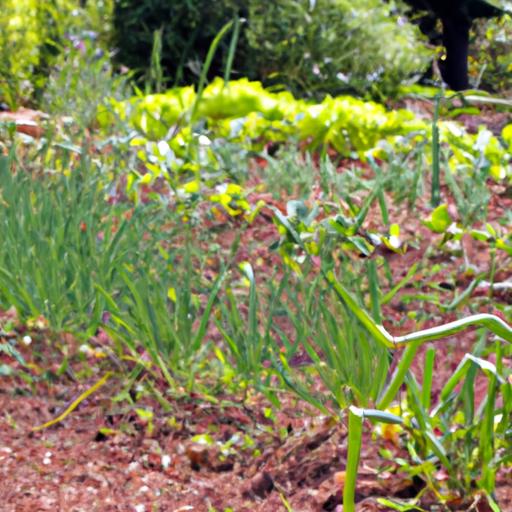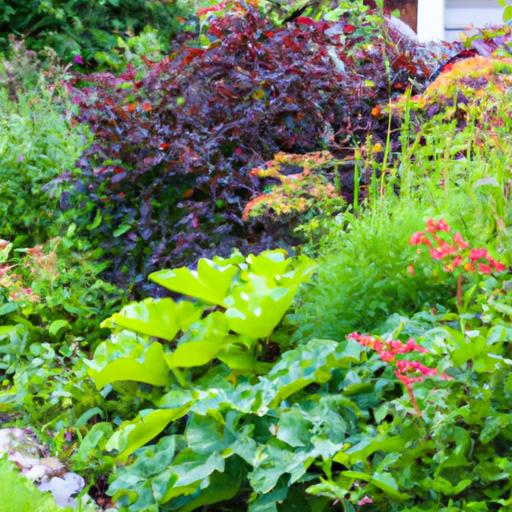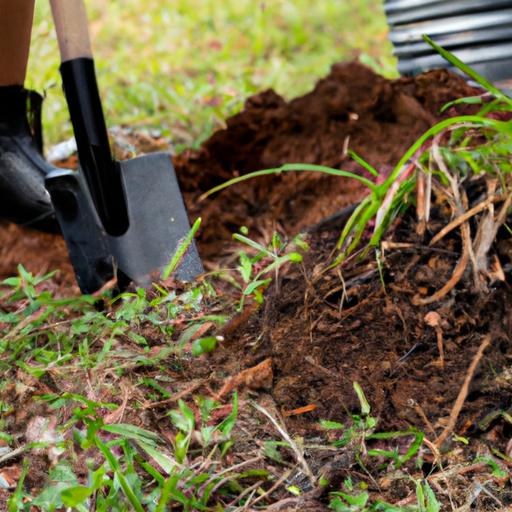Introduction
Are you an avid gardener or just starting to explore the world of plants? If so, understanding gardening zones is crucial to ensure the success of your horticultural endeavors. In this article, we will delve into the topic and specifically focus on the gardening zone of Maryland.
Importance of Knowing Gardening Zones
Imagine planting a delicate tropical flower in a region prone to frost. The outcome would likely be disappointing, as the plant would struggle to survive in unsuitable conditions. By knowing your gardening zone, you can make informed decisions about which plants will thrive in your area. It enables you to select varieties that are adapted to the climate and temperature ranges specific to your zone.
Overview of Maryland’s Gardening Zone
Located in the mid-Atlantic region of the United States, Maryland boasts a diverse climate that influences its gardening zone. The state experiences four distinct seasons, ranging from hot summers to cold winters. To determine the appropriate plants for your garden, it’s essential to identify the specific gardening zone within Maryland.
Now that we understand the importance of gardening zones and have a general overview of Maryland’s gardening zone, let’s explore the USDA Plant Hardiness Zone Map in the next section. By using this map, we can pinpoint the precise gardening zone for Maryland and gain insights into the ideal plants for each zone.
Understanding Gardening Zones
Gardening zones serve as a valuable tool for gardeners, providing essential information about the climate and environmental conditions of a specific region. Let’s explore the definition and purpose of gardening zones and the factors that determine them.
Definition and Purpose
Gardening zones, also known as hardiness zones, are geographical areas that are categorized based on their climate and temperature patterns. These zones help gardeners identify which plants are most likely to thrive in their respective regions. The United States Department of Agriculture (USDA) developed the widely-used USDA Plant Hardiness Zone Map to divide the country into different zones.
The purpose of gardening zones is to assist gardeners in making informed decisions about plant selection, ensuring optimal growth and survival. By understanding your gardening zone, you can choose plants that are well-suited to the specific conditions of your area, such as temperature ranges, frost dates, and rainfall levels.
Factors Determining Gardening Zones
Several factors contribute to the determination of gardening zones. The primary factors include:
-
Temperature: The average minimum temperature during the winter months is a crucial factor in determining a gardening zone. Different plants have varying tolerance levels for cold temperatures, and gardening zones help identify which plants can withstand the winter conditions of a specific region.
-
Geographic Location: The location of an area, including its proximity to bodies of water, mountains, and other geographical features, can significantly influence its gardening zone. These factors can impact temperature extremes, frost occurrence, and microclimates within a zone.
-
Climate: The overall climate of an area, which encompasses factors such as humidity, precipitation, and sunshine hours, plays a role in defining gardening zones. Areas with similar climate patterns are often grouped together in the same zone.
Understanding the definition and purpose of gardening zones, as well as the factors that determine them, sets the foundation for identifying Maryland’s specific gardening zone. In the next section, we will explore the USDA Plant Hardiness Zone Map and how it can help us pinpoint Maryland’s gardening zone.
The USDA Plant Hardiness Zone Map
The USDA Plant Hardiness Zone Map is an invaluable tool for gardeners across the United States. It divides the country into various zones based on average annual minimum temperatures. This allows gardeners to determine which plants are most likely to thrive in their specific climate conditions. Let’s take a closer look at this map and understand how it can help us in our gardening endeavors.
Overview of the USDA Plant Hardiness Zone Map
The USDA Plant Hardiness Zone Map provides a comprehensive visual representation of the different gardening zones throughout the United States. Each zone is assigned a unique number, indicating the minimum temperature range experienced in that area. This information is crucial for gardeners as it helps them select plants that can withstand the temperatures of their specific zone.
How to Use the Map
Using the USDA Plant Hardiness Zone Map is relatively straightforward. To find your gardening zone in Maryland, locate your area on the map and identify the corresponding zone number. For example, if you reside in Baltimore, you would search for the zone number that encompasses that region. Armed with this knowledge, you can now choose plants that are rated for your specific zone, increasing your chances of successful cultivation.
Significance of Gardening Zones on Plant Survival
Gardening zones play a vital role in determining the survival and success of plants. Each zone has its own unique climate characteristics, such as temperature ranges and frost dates. By selecting plants that are well-suited to your zone’s conditions, you are providing them with the optimal environment for growth. This increases the chances of your plants thriving, blooming, and producing an abundant harvest.
Understanding the USDA Plant Hardiness Zone Map and its significance in plant survival is crucial for any gardener. In the next section, we will explore how to determine the specific gardening zone for Maryland, taking into account its geographic location and climate.
Determining Maryland’s Gardening Zone
Geographic Location and Climate
The geographic location and climate of an area play a significant role in determining its gardening zone. Maryland, situated in the mid-Atlantic region of the United States, experiences a diverse climate due to its proximity to both the Atlantic Ocean and the Appalachian Mountains.
The state’s location along the east coast grants it a moderate climate, with hot and humid summers and cold winters. The coastal areas of Maryland tend to have milder temperatures compared to the inland regions, which can be influenced by the mountainous terrain.
Maryland’s USDA Hardiness Zones
To further understand Maryland’s gardening zone, we turn to the United States Department of Agriculture (USDA) Hardiness Zone Map. This map divides the country into different zones based on the average minimum winter temperatures.
Description of Zone 6
Zone 6 covers portions of Maryland, particularly the western and northern parts of the state. This zone is characterized by average minimum temperatures ranging from -10°F to 0°F (-23°C to -18°C). Gardeners in Zone 6 should select plants that can withstand colder temperatures and have an extended growing season to make the most of the region’s relatively moderate climate.
Description of Zone 7
Zone 7 encompasses a significant portion of Maryland, including central and southern regions. The average minimum temperatures in Zone 7 range from 0°F to 10°F (-18°C to -12°C). Gardeners in this zone can enjoy a longer growing season compared to Zone 6 and have a wider variety of plants that can thrive in the milder winters and warmer summers.
Description of Zone 8
Zone 8 is limited to the southernmost parts of Maryland, mainly the coastal areas. This zone experiences average minimum temperatures between 10°F and 20°F (-12°C to -7°C). Gardeners in Zone 8 benefit from a longer growing season, with milder winters and hot summers. They can experiment with a broader range of plants that are suited to the region’s warmer climate.
Understanding the specific gardening zones within Maryland allows gardeners to select plants that are better adapted to the local climate, ensuring successful and thriving gardens. In the next section, we will provide valuable gardening tips tailored to each gardening zone in Maryland.
Gardening Tips for Different Zones in Maryland
Maryland encompasses a range of gardening zones, each with its own unique climate and conditions. To ensure your gardening success, here are some valuable tips for each zone:
Zone 6 Gardening Tips
Zone 6 in Maryland experiences cold winters with average minimum temperatures ranging from -10°F to 0°F (-23°C to -18°C). However, it also enjoys warm summers, providing an opportunity for a variety of plants to thrive. To make the most of your Zone 6 garden, consider the following tips:
-
Choose Hardy Perennials: Opt for perennials that can withstand the cold temperatures of Zone 6, such as asters, coneflowers, and dianthus. These hardy plants will return year after year, adding beauty to your garden.
-
Mulch for Insulation: Apply a layer of organic mulch around your plants to insulate the soil and protect the roots during winter. This helps maintain moisture and prevents frost damage.
-
Start Seeds Indoors: To extend your growing season, start seeds indoors before the last frost date. This way, your seedlings will be ready to transplant into the garden once the weather warms up.
Zone 7 Gardening Tips
Zone 7 in Maryland is characterized by milder winters compared to Zone 6, with average minimum temperatures ranging from 0°F to 10°F (-18°C to -12°C). It also enjoys longer growing seasons and warmer summers. Consider these tips for gardening success in Zone 7:
-
Grow Heat-Tolerant Plants: Take advantage of the warmer summers by growing heat-loving plants like tomatoes, peppers, and eggplants. These crops thrive in the longer growing season of Zone 7.
-
Water Regularly: With the higher temperatures, it’s crucial to provide adequate water to your plants. Water deeply and consistently to ensure their hydration needs are met.
-
Consider Shade Options: While Zone 7 offers favorable conditions for many plants, some may benefit from partial shade. Consider incorporating shade structures or strategically planting taller plants to provide shade during the hottest parts of the day.
Zone 8 Gardening Tips
Zone 8 in Maryland experiences mild winters, with average minimum temperatures ranging from 10°F to 20°F (-12°C to -7°C). This zone offers an extended growing season and mild summers. Here are some tips to maximize your gardening efforts in Zone 8:
-
Embrace Warm-Season Crops: With the longer growing season and mild summers, Zone 8 is ideal for warm-season crops like melons, sweet potatoes, and okra. Take advantage of these favorable conditions to enjoy a bountiful harvest.
-
Provide Adequate Watering: While Zone 8 benefits from milder temperatures, it’s still important to water your plants regularly, especially during dry spells. Monitor soil moisture and provide supplemental irrigation as needed.
-
Protect from Heat: In the peak of summer, some plants may require protection from intense heat. Consider using shade cloth or providing shade from taller plants to shield delicate plants from excessive sun exposure.
By following these gardening tips tailored to your specific zone in Maryland, you’ll be on your way to creating a thriving garden that flourishes throughout the seasons.
Conclusion
Understanding Maryland’s gardening zone is vital for any gardening enthusiast looking to cultivate a thriving garden. By identifying the specific zone, you can choose plants that are well-suited to the unique climate and temperature conditions of your area.
In this article, we explored the importance of knowing gardening zones and provided an overview of Maryland’s gardening zone. We discussed how the USDA Plant Hardiness Zone Map can help determine the gardening zone for Maryland and its significance in plant survival.
Remember, different zones in Maryland require specific care and attention. Whether you’re in Zone 6, Zone 7, or Zone 8, it’s crucial to follow appropriate gardening tips tailored to your zone. By doing so, you’ll maximize your chances of success and enjoy a bountiful, thriving garden.
To summarize, understanding your gardening zone in Maryland empowers you to make informed decisions about plant selection, care, and maintenance. So, go ahead and embrace the wonders of gardening in Maryland by exploring the unique opportunities offered by your specific gardening zone.
Happy gardening!




